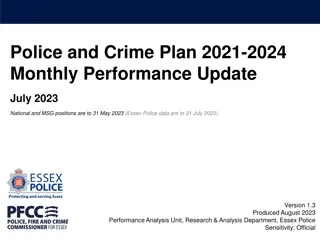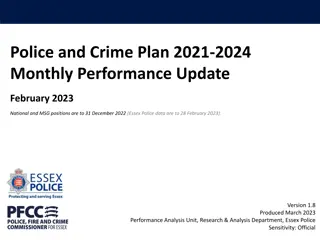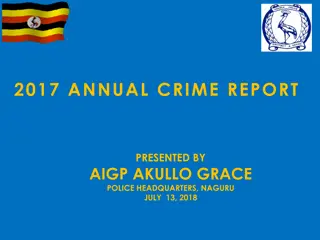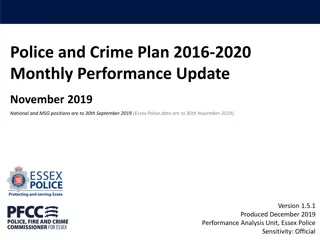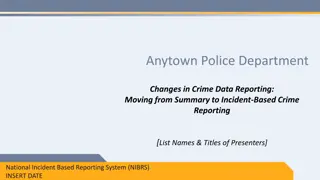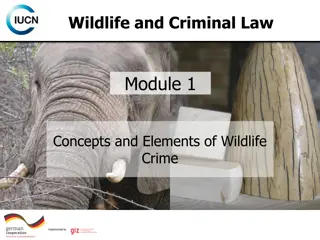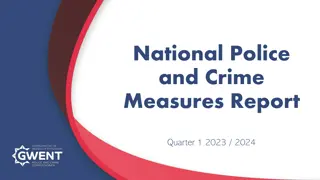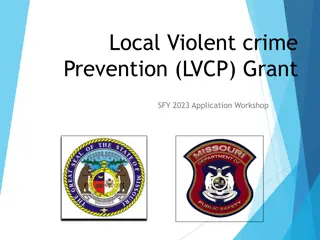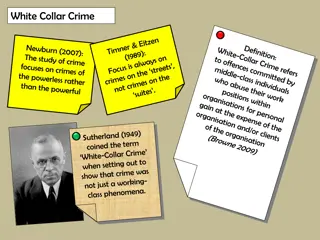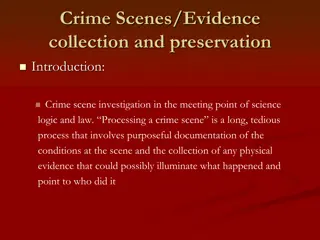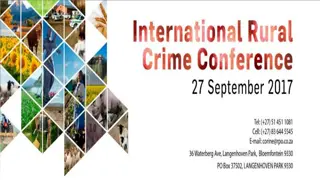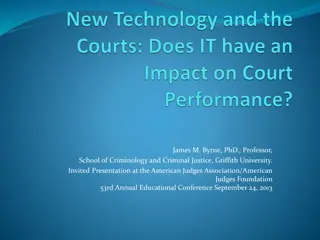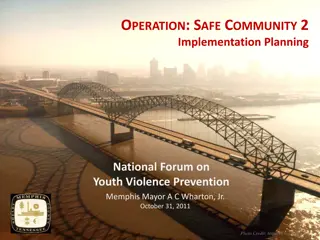Exploring the Implementation of CPTED Strategies in Crime Prevention
Understanding CPTED (Crime Prevention Through Environmental Design) and its application is crucial for reducing crime and improving quality of life. This approach involves designing and using the built environment effectively to create safer communities. The delivery of CPTED involves collaboration between police forces, local authorities, and development clients to incorporate crime prevention strategies in the planning process. Various initiatives like Designing Our Crime Officers (DOCOs) program and Crime Impact Statement (CIS) process highlight the importance of integrating CPTED principles into urban development projects. Despite challenges in coordinating with police forces and ensuring consistent involvement in planning, efforts are being made to make CPTED an integral part of the design and build process for new developments.
Download Presentation

Please find below an Image/Link to download the presentation.
The content on the website is provided AS IS for your information and personal use only. It may not be sold, licensed, or shared on other websites without obtaining consent from the author. Download presentation by click this link. If you encounter any issues during the download, it is possible that the publisher has removed the file from their server.
E N D
Presentation Transcript
Is it just a guessing game? Assessing the application of CPTED Dr Leanne Monchuk
CPTED The proper design and effectiveuse of the built environment, that can lead to a reduction in the fear or incidence of crime and an improvement in the quality of life (Crowe, 2000 p. 46)
Delivery of CPTED 43 police forces 1 dedicated officer in each force Designing our Crime Officers (DOCOs) Work within an active police station Serving police officers, retired officers or police staff
Delivery of CPTED Over 300 local authorities in England and Wales
Delivery of CPTED National planning policy - crime prevention should be considered in the design and build of new dwellings No obligation that the police must be involved in the planning process No systematic process to ensure that the police are involved in the design of new developments This applies across police forces and within the forces: There is no force policy. There is no direction Whatever level of operation we have is down to individual development and partnerships
CPTED & the planning process Planning Application submitted to Local Authority Planning Permission Granted or Refused Development Client a lot of developments will bypass us at the pre-planning stage and we won t see them until it gets to the planning application which is far too late down the line... [Police Force]
Greater Manchester Police (GMP) Design-led consultancy Design stage/pre-planning application stage Crime Impact Statement (CIS) process charge a fee
CPTED & the CIS process Planning Application submitted to Local Authority Planning Permission Granted or Refused Client Development All 10 planning authorities in Manchester stipulate that major planning applications must include a Crime Impact Statement
Key questions! Before thinking about how DOCOs deliver crime prevention advice, need to ask two key questions: 1) Is there a skill? 2) How is the skill applied? Evaluations of SBD up to now overlook this basic question
Consistency of application? Concerns about the application of CPTED advice by DOCOs Inconsistency with which it is applied, depending upon the DOCO involved (p.17) 1) Is there a skill? 2) How is the skill applied?
CPTED is it just a guessing game? In medicine, medical science is no good unless GPs apply it In crime prevention, the principles of CPTED are no good unless DOCOs apply them To date, emphasis placed on evaluating initiatives Gap - how the principles of CPTED are actually applied Prior to thinking about the delivery of CPTED, need to evidence whether there is a skill Need to know whether DOCOs are more like astronomers or astrologers
Developed an exercise The way I chose to do it was to take an already built development that DOCOs didn t know Ask them to predict where crime would have occurred Not perfect - the exercise I did could be improved Whatever its imperfections, something of this kind is essential to situational crime reduction Giving people a medical education and failing to test what they have learned is unthinkable. So it should be with crime prevention practitioners
Assessing the application of CPTED 28 of the most experienced ALOs in England & Wales
Assessing the application of CPTED Property crime: Burglary dwelling Burglary other Vehicle crime: Theft of motor vehicle Theft from motor vehicle
3 key questions 1) Do DOCOs identify different numbers (and hence proportions) of locations in the development as problematic? 2) Was there consensus in the locations chosen? 3) Were the locations chosen actually victimised?
WARNING! Place structure is not the only determinant of crime Would not expect perfect place identification However, if place structure is a key factor, performance should be better than chance
Property crime 20 18 Number of ALOs who identified location as vulnerable 16 14 12 10 8 6 4 2 0 D22 D20 D15 D12 D13 D14 D23 D37 D39 D41 D43 D45 D25 D10 D28 D29 D30 D24 D11 D27 D42 D44 D26 D31 D32 D18 D19 D21 D40 D16 D17 D38 D35 D36 D34 D33 D5 D6 D1 D7 D8 D9 D2 D3 D4 Individual dwelling identifier
So what? Many factors may determine victimisation, but if there is a skill, prediction has to be better than chance There is a skill (better than chance) BUT variation across sample Non-police tended to perform better Concerns regarding inconsistent assessment of vulnerability are founded Radical overhaul of training and CPD required to help improve predictive skill Training based on knowledge and results - VR/CAD/case studies Way forward? GMP - strong case for being a model of delivery However, income generated must remain incidental (sustain and improve)
Thank you Dr Leanne Monchuk +44 (0)1484 472670 l.y.monchuk@hud.ac.uk @leannemonchuk


